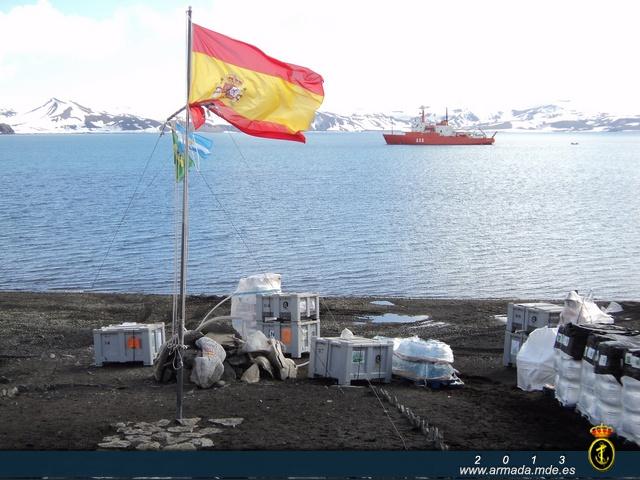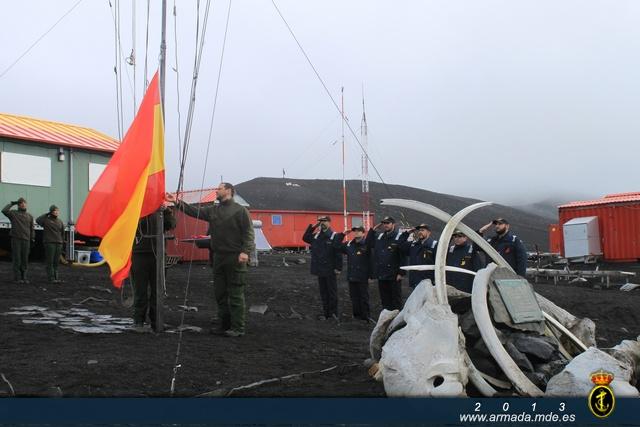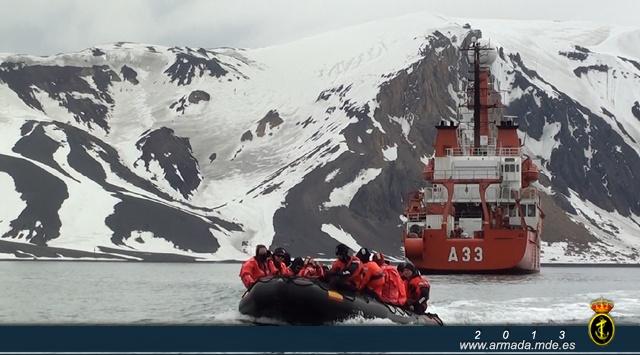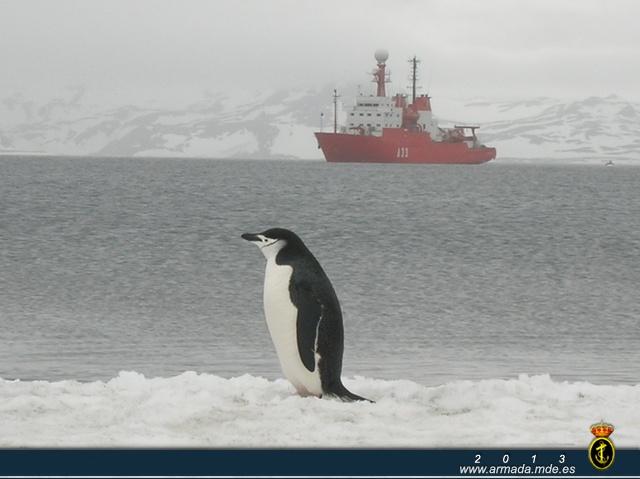The oceanographic research ship ‘Hespérides’ concludes the Antarctic Campaign with the closure of the Spanish Bases
Tuesday, March 05, 2013
 + 3
+ 3

The oceanographic research ship ‘Hespérides’ concluded last Tuesday the closure of the Spanish Antarctic Bases ‘Juan Carlos I’ and ‘Gabriel de Castilla’. The ship has sailed through the Drake Passage (Mar de Hoces), one of the most violent and stormiest seas in the world, towards the Argentinean port of Ushuaia.
Since her departure from her home base in Cartagena on November 13th, the ‘Hespérides’ (A-33) has sailed 15,200 nautical miles and used more than 600,000 liters of fuel. The ship has carried more than 50 tons of materiel and supplies to the Spanish Bases and also people from nine different nationalities with more than 200 ship-to-shore transfers, anchoring 29 times.
During this campaign, the A-33 has visited the following international bases: Maldonado (Ecuador), Frey (Chile), Carlini (Argentina), Artowski (Poland), Artigas (Uruguay), O’Higgins (Chile), Primavera (Argentina), S. Kliment Ohridski (Bulgaria), Decepción (Argentina) and the international camp of Byers.
As milestones of this cruise, the ‘Hespérides’ has sailed through the Drake Passage four times and 16 through the Neptune Bellows, the narrow and dangerous passage to Deception Island. Besides, this year has been the 25th anniversary of the Spanish Base ‘Juan Carlos I’.
Three important scientific projects have been carried out on board the ship during this campaign, and the equipment anchored during the 2011-12 cruise successfully recovered.
On February 23rd, upon conclusion of the SCAN 2013 project, the ship proceeded to Deception Island to collect garbage and different cargo from the ‘Gabriel de Castilla’ Base. At the same time a research project was carried out studying sediments from the crater of the island volcano.
After a simple ceremony lowering the flag at the ‘Gabriel de Castilla’ Base, the ship set sail towards Livingstone Island. On the 26th the remaining personnel and materiel from the ‘Juan Carlos I’ Base embarked and proceeded to the South Shetland Islands for the final logistic tasks in the archipelago.
Scientific projects during the transit to Spain
After the Antarctic campaign, the ‘Hespérides’ is scheduled to carry out a scientific project in the Chilean fjord of Aisen. Sediment samples will be collected to identify and analyze the submarine landslide which caused the 2007 tsunami in the area.
During the two-month transit back to Spain, a couple of projects will be carried out: one of them will test the absorption of carbon dioxide in the Atlantic Ocean, and the other one will study the mechanism which prevents the total remineralisation of the organic carbon dissolved in the marine systems.
Characteristics of the ship
The “Hespérides” is the only Spanish ship purposely built for multidisciplinary scientific research in any sea or ocean, including Arctic and Antarctic Areas.
The crew consists of 55 people, now under the command of Cdr. Jaime Cervera. The ship can also accommodate up to 37 scientists and technicians.
In 2010-11 the “Hespérides” took part in the “Malaspina Expedition” around the world. During this 7-month cruise the ship collected more than 40,000 scientific samples.






